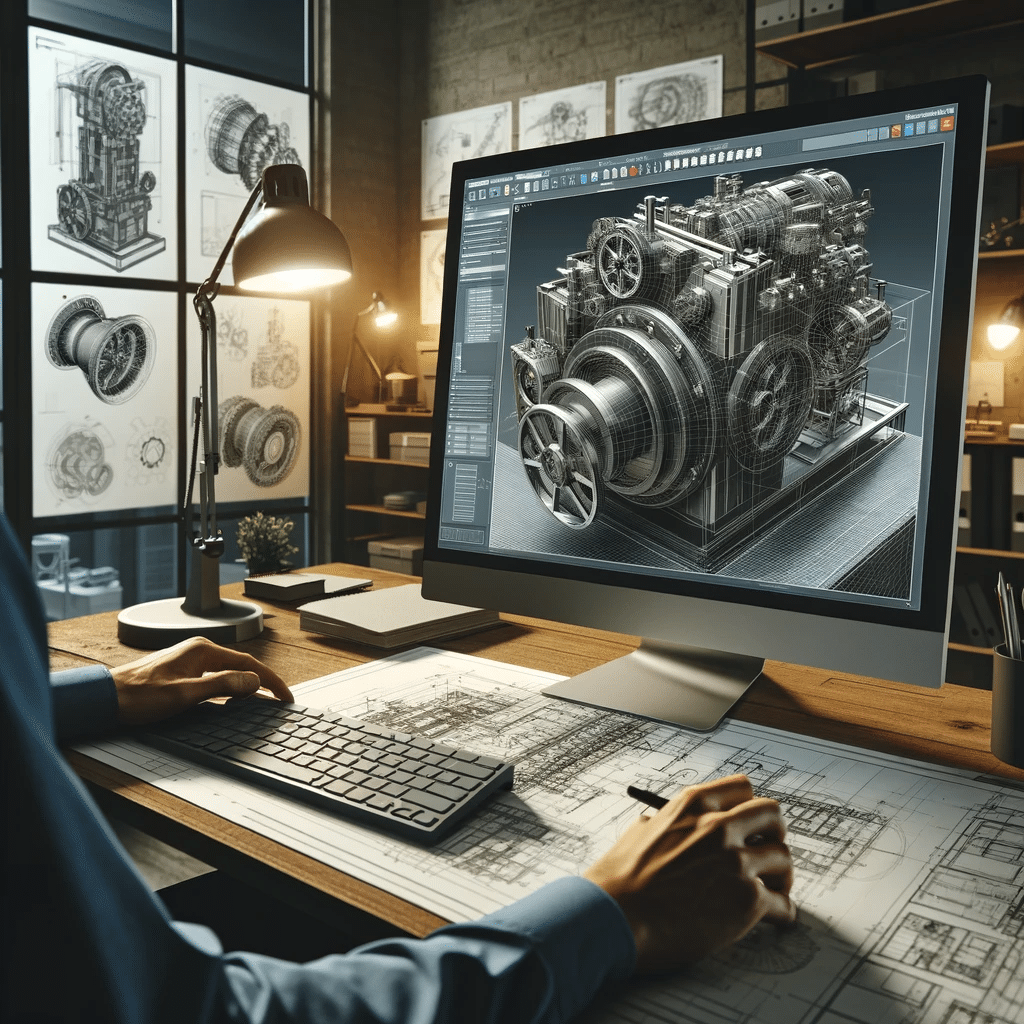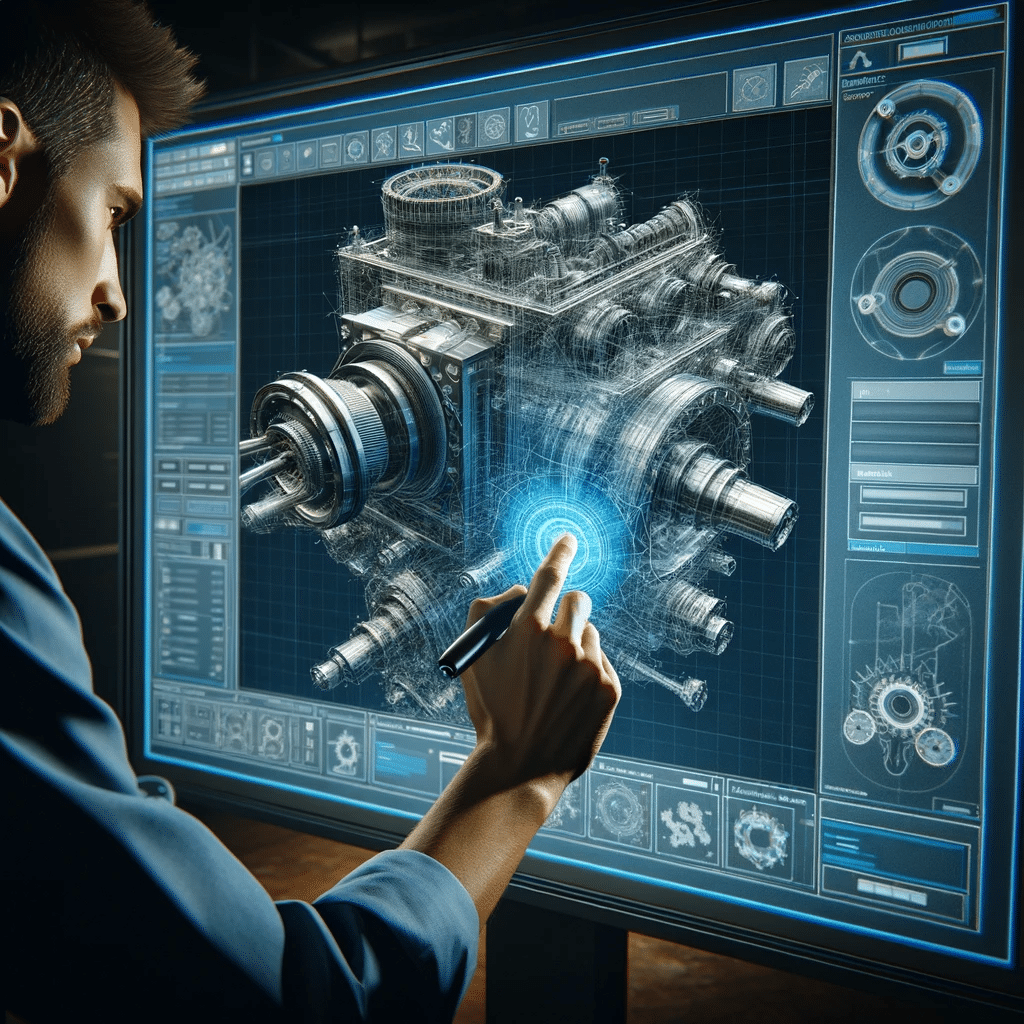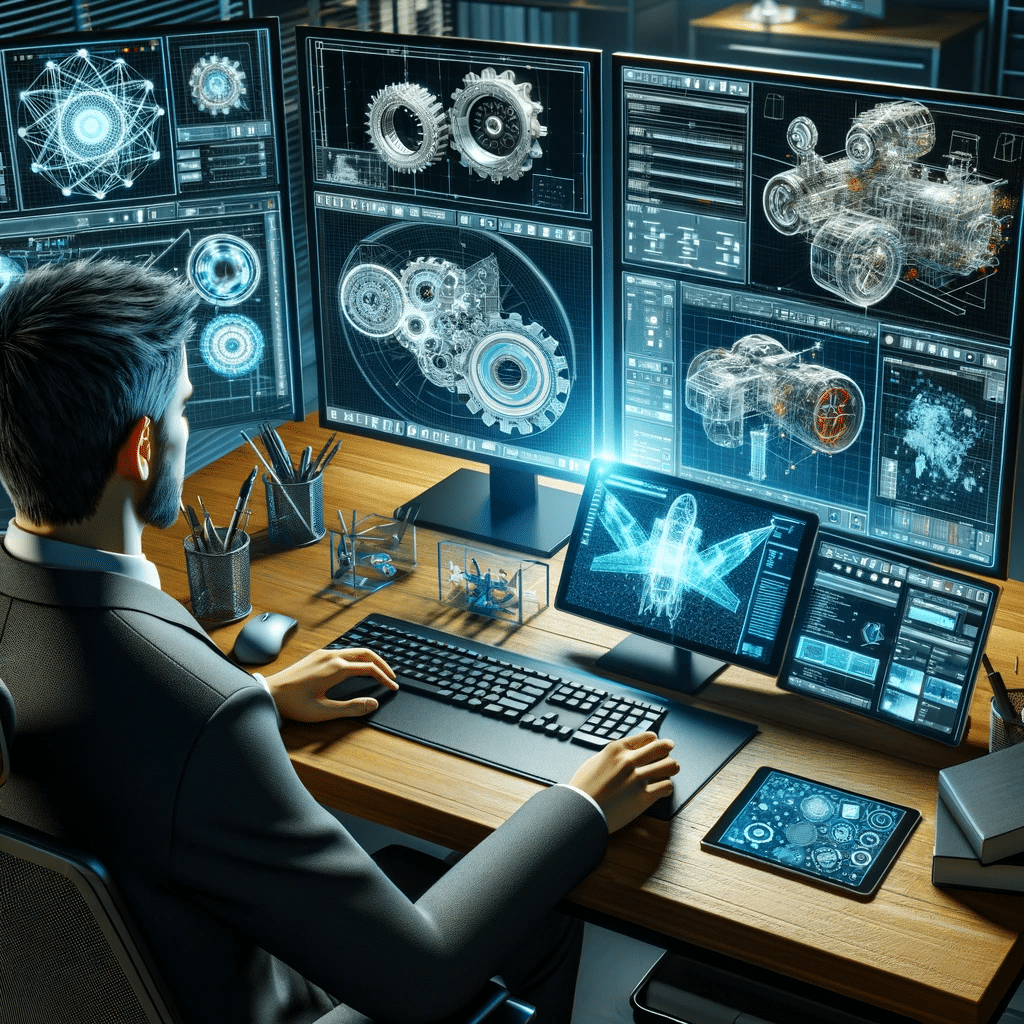3D visualization in mechanical engineering: innovation, efficiency and future prospects
In a world that is constantly evolving, it is essential to keep up with the latest technological developments. 3D visualization in mechanical engineering is no longer just an option, but a necessity that is revolutionizing the way we design and produce machines.
Overview
This article will highlight the transformative power of 3D visualization in mechanical engineering. We will investigate how this technology improves the design and manufacturing process, increases productivity and optimizes product quality.
Objective
By the end of this article, you will understand why 3D visualization is indispensable in mechanical engineering. You will learn how to use this technology effectively to improve your projects, reduce costs and ultimately gain a competitive advantage.

3D visualization – An introduction 3D visualization is an impressive technology that enables engineers and designers to design and analyze machines and components in a three-dimensional space. This visualization technology is an essential part of modern mechanical engineering and plays a central role in the planning, development and testing of machines of all kinds.
Why 3D visualization in mechanical engineering? The use of 3D visualization in mechanical engineering offers numerous advantages. It makes it possible to visualize complex machine parts and systems in detail and thus identify and solve problems at an early stage. This leads to a more efficient design and a reduction in development times. It also enables a more precise and realistic presentation of products, which is particularly beneficial when presenting them to stakeholders and customers.
Advantages of 3D visualization for design processes 3D visualization is revolutionizing the design process in mechanical engineering. It makes it possible to visualize design ideas quickly and efficiently, resulting in significant time and cost savings. Thanks to 3D visualization, different design variants can be easily created and compared, leading to optimized and more innovative solutions.
Integration into the manufacturing process The integration of 3D visualization into the manufacturing process enables more precise and efficient production. Using the 3D models, manufacturing teams can identify and rectify problems before production, leading to a reduction in manufacturing errors and material waste. The precise visualization also facilitates communication between the various departments, which improves collaboration and workflow.
Technological advances and their impact The rapid development of 3D visualization technologies has had an enormous impact on mechanical engineering. Modern software solutions offer increasingly realistic and detailed visualizations, which further improves the accuracy of the designs and the quality of the end products. The integration of virtual reality (VR) and augmented reality (AR) into the visualization process also opens up completely new possibilities in product development and customer presentation.
Improving the customer experience through 3D visualization Another important aspect of 3D visualization in mechanical engineering is improving the customer experience. Detailed and realistic 3D models give customers a better idea of the end product, which leads to higher customer satisfaction and greater customer confidence. This is particularly important for customized or complex mechanical engineering projects in which the customer is actively involved in the development process.

The role of 3D visualization in error prevention A decisive advantage of 3D visualization lies in its ability to detect errors at an early stage. By visualizing machine parts and systems in detail, engineers can identify potential problems before they occur in the real world. This makes a significant contribution to reducing downtimes and increasing the overall reliability of the machines.
Sustainability through more efficient design processes In addition to optimizing production, 3D visualization also contributes to sustainability. Through more precise designs and the reduction of material waste, this technology makes an important contribution to the environmentally friendly design of manufacturing processes. At a time when sustainable practices are becoming increasingly important, this is an aspect that should not be underestimated.
Future prospects: Where is the journey taking us? The future of 3D visualization in mechanical engineering is promising. With ongoing innovations in software development and the increasing integration of AI technologies, the possibilities for visualization will continue to grow. These developments could lead to even more efficient, cost-effective and environmentally friendly design and manufacturing processes.
How you can implement 3D visualization in your company Implementing 3D visualization in your company requires strategic planning. It starts with choosing the right software that meets your specific needs. Training your employees in the use of this technology is also crucial in order to exploit its full potential. It is also important to establish a continuous improvement process in order to keep pace with the latest technological developments.
Adaptation to specific industry requirements The flexibility of 3D visualization makes it possible to adapt it to the specific requirements of different industries in mechanical engineering. Whether it’s the automotive industry, aerospace, heavy engineering or precision mechanics – 3D visualization can be tailored to meet specific needs.
Efficient collaboration and communication Another important aspect of 3D visualization is the improvement of collaboration and communication within teams and with external stakeholders. By using 3D models, complex technical details can be clearly communicated and misunderstandings minimized. This leads to more efficient project implementation and strengthens relationships with customers and partners.

Integration with other technologies The integration of 3D visualization with other technologies such as CAD systems, simulation tools and data management platforms is crucial for a comprehensive digital working environment. This integration enables a seamless workflow and more efficient use of resources, which increases productivity and promotes innovation.
Conclusion: An indispensable tool in modern mechanical engineering In summary, it can be said that 3D visualization in mechanical engineering is not just a trend, but an indispensable tool that paves the way for innovative design and manufacturing processes. Thanks to the continuous development of this technology and its integration into various areas of mechanical engineering, it will continue to play a key role in the future.
Book a demo today for more information on how interactive 3D visualization can be used interactively for customer demonstrations in mechanical engineering!
For a prime example and information on the use of 3D technologies in the industry, visit marconomy.de.
Find out more about klar.land’s machine demo at Interzum here.

Leave a Reply